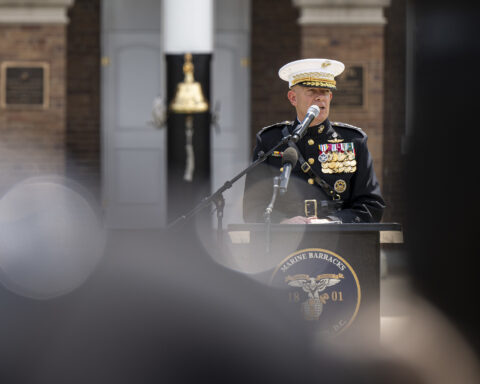
VIDEO: CMC Gen. David Berger Retires, Gen. Eric Smith Takes Over Marine Corps
WASHINGTON, D.C. – The leader of one of the most controversial eras of the Marine Corps retired on Monday as…
Copyright 2024 U.S. Naval Institute. All Rights Reserved.